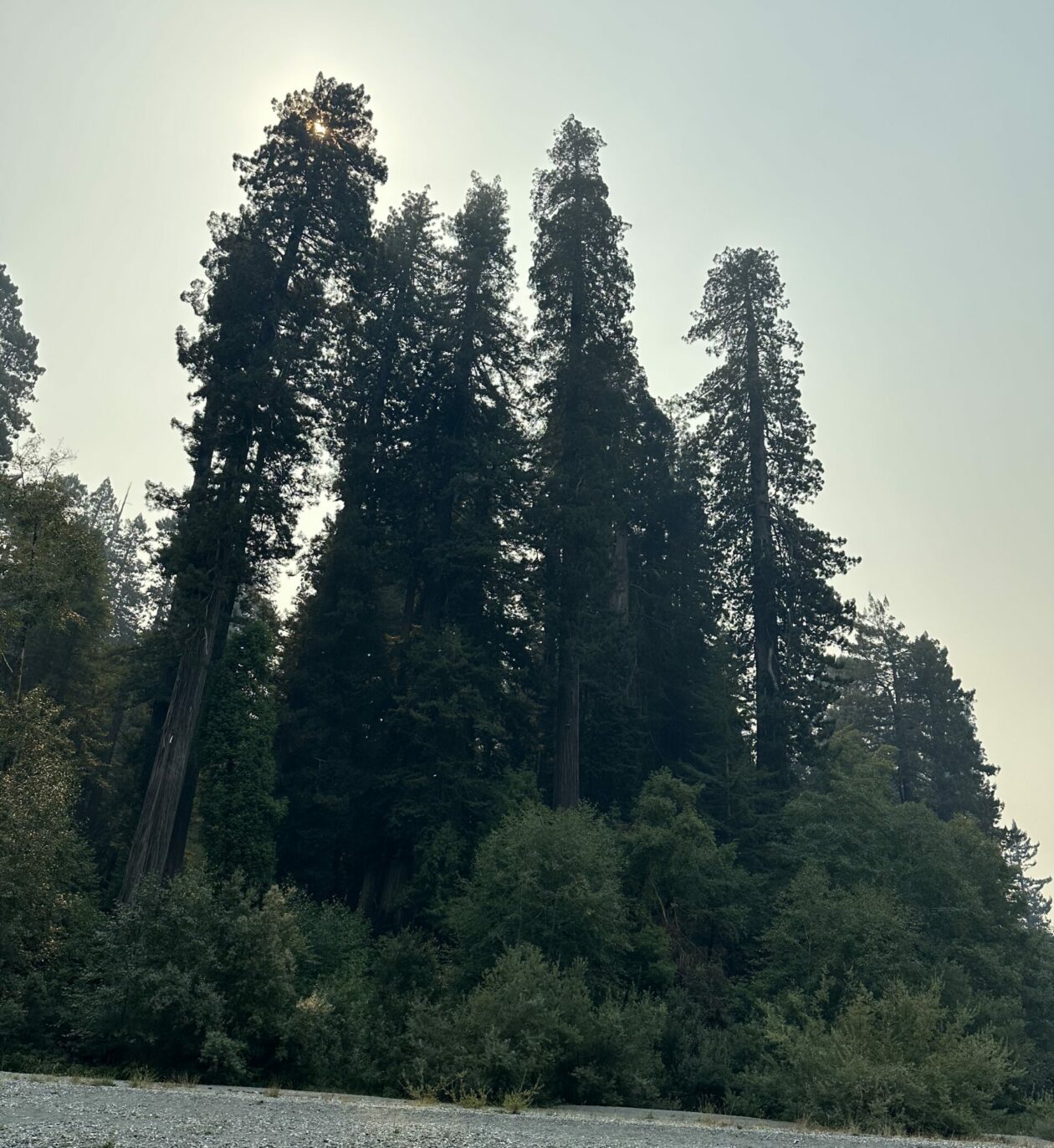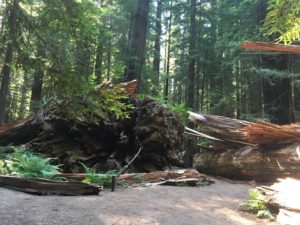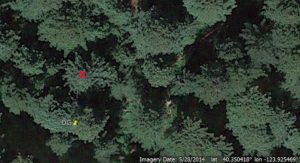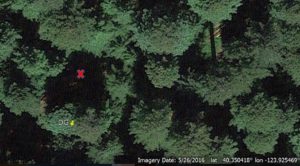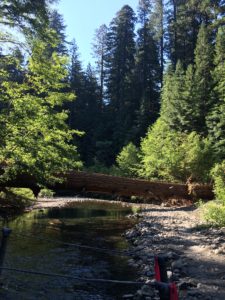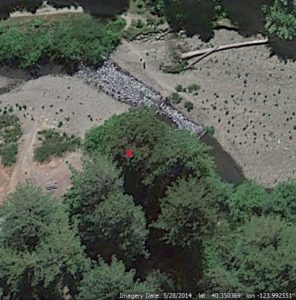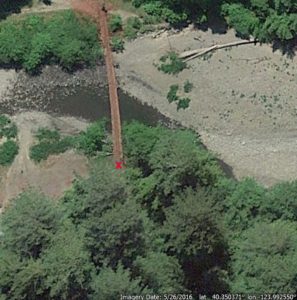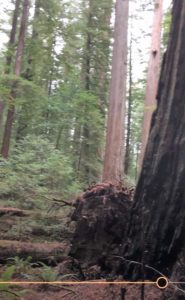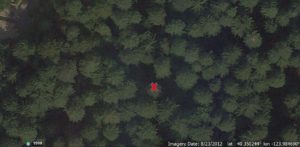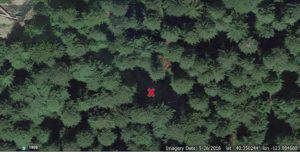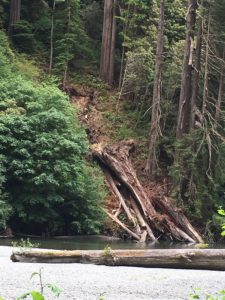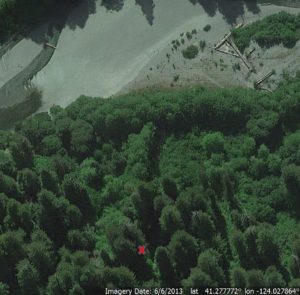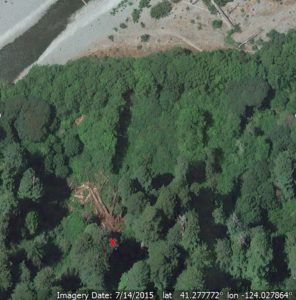Redwood Creek Symphony – Opus 381 – Allegretto
As Inspired by Beethoven’s Seventh Symphony, Second Movement (Allegretto), “Knowing”.
For more photos and associated music in You Tube, please go here
Movement 1 – il fiurne icontra l’oceano (River Meets Ocean)
Redwood Creek flows into the Pacific Ocean just south of Orick, California. The outflow area includes some rocky headlands, pastures, and a large earthen levy. The levy is to mitigate the effect of offshore earthquake induced tidal waves. Not too long ago, and for thousands of years before that, native peoples used this area in the winter for fishing and hunting, with their villages located a few miles upstream in sunnier and warmer areas near Emerald Creek (a feeder creek to Redwood Creek). The native peoples also used the Bald Hills area in the summer and fall for hunting and collecting acorns. The Emerald Ridge, Dolason, and Tall Trees trails are likely routes originally used by the native peoples to travel between the Bald Hills and Redwood Creek.
There is a good reference created in 1914 that included interviews with older Chilula peoples who lived along Redwood Creek before mid 19th century conflicts with settlers led to many deaths and resettlement of the survivors to the Hoopa Reservation: https://digitalassets.lib.berkeley.edu/anthpubs/ucb/text/ucp010-007.pdf
One way to access this area is a pleasant beach walk from the Kuchel Visitor center. It is a lot safer and warmer to walk near the high tide line versus in the surf, as the water is cold and sneaker waves can knock a person down and drag them out into the ocean.
This is an area where the steady outflow of Redwood Creek can be expressed by soft string music, then the waves are represented by the thump of the kettle drum, and the sadness of what was lost through minor scales played by oboes and clarinets, particularly the first wailing call at the start of the movement.
This movement covers Redwood Creek from the ocean to the turn southward, and the first one minute forty five seconds of Beethoven’s allegretto.
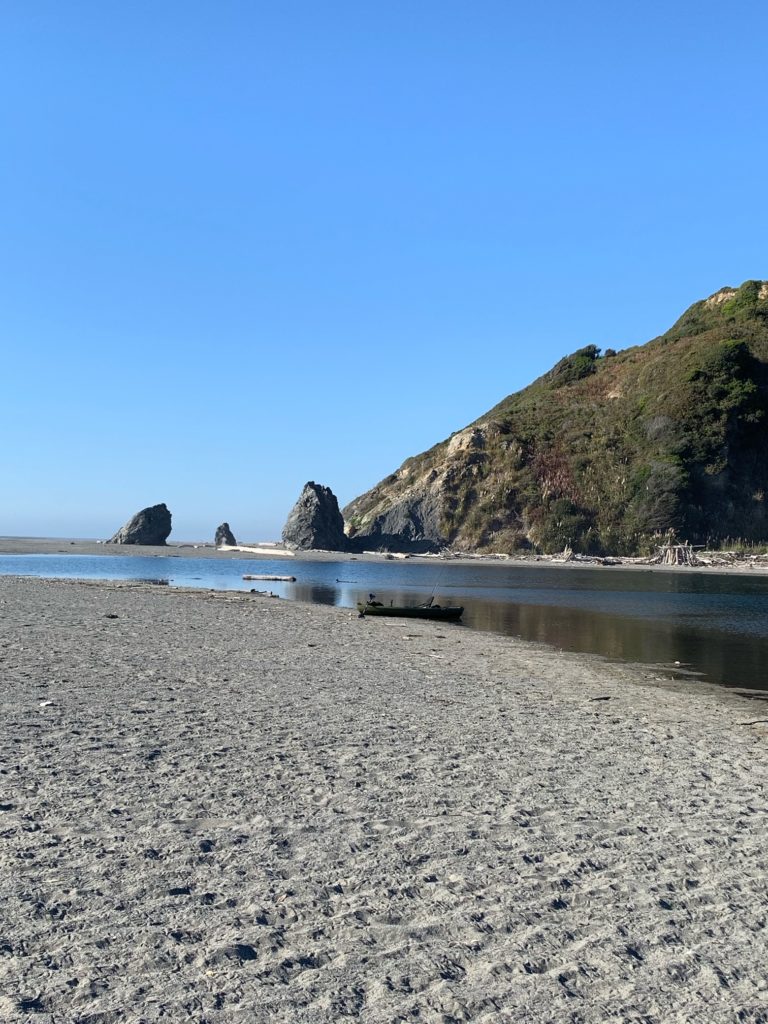
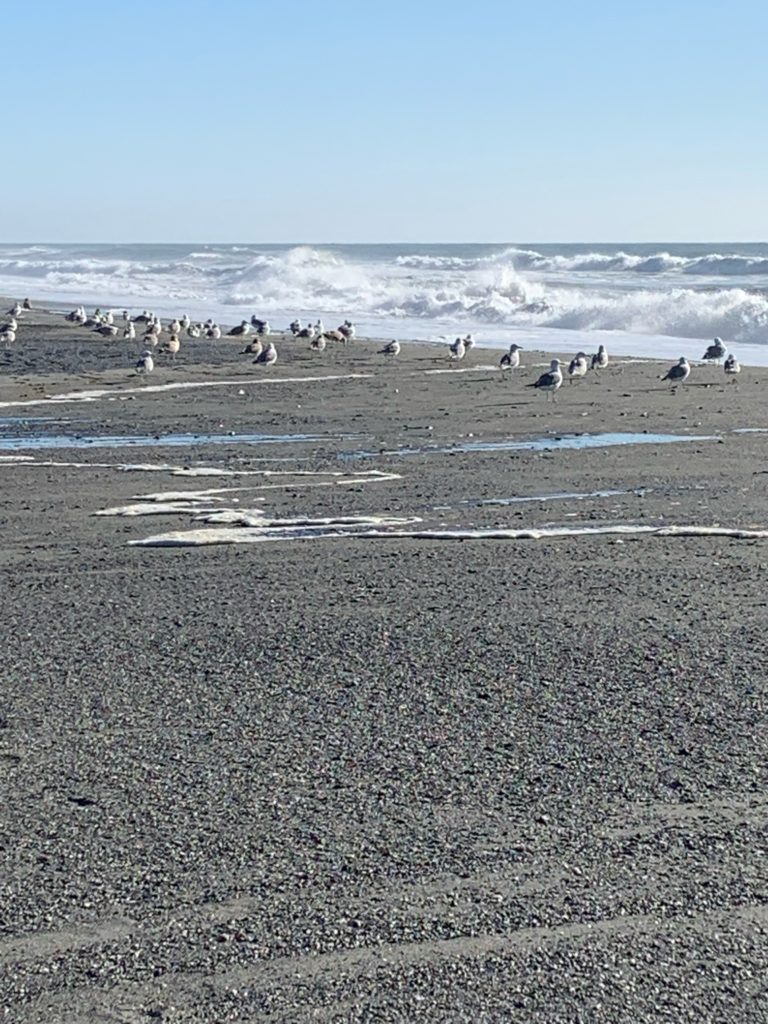
Movement 2 – inizia la grande foresta (The Great Forest Starts)
Moving upstream Redwood Creek turns south, winding around the base of Orick Hill. It is in this area the great Redwood Creek forest starts. Here the trees are not quite as tall as further upstream, as sunlight is suppressed by coastal fog for much of the year. Yet the tallest trees in this area approach 330 feet in height. There are open fields on the east side of the creek, through fire maintenance by native peoples and now the National Park Service. Elk are in this area, and there is still a hint of the Pacific Ocean as evidenced by large Sitka spruce trees in places near the creek. Big mossy maples are also around, giving a hint to past flooding events.
This area is a transition zone between the maritime area and the tallest trees which are further upstream.
In this movement there is a building, repeated melody played in the string section. It is a hint of what is to come, as the tall trees are all round and become more numerous moving upstream. This would cover about 1:45 to 2:45 in Beethoven’s piece.
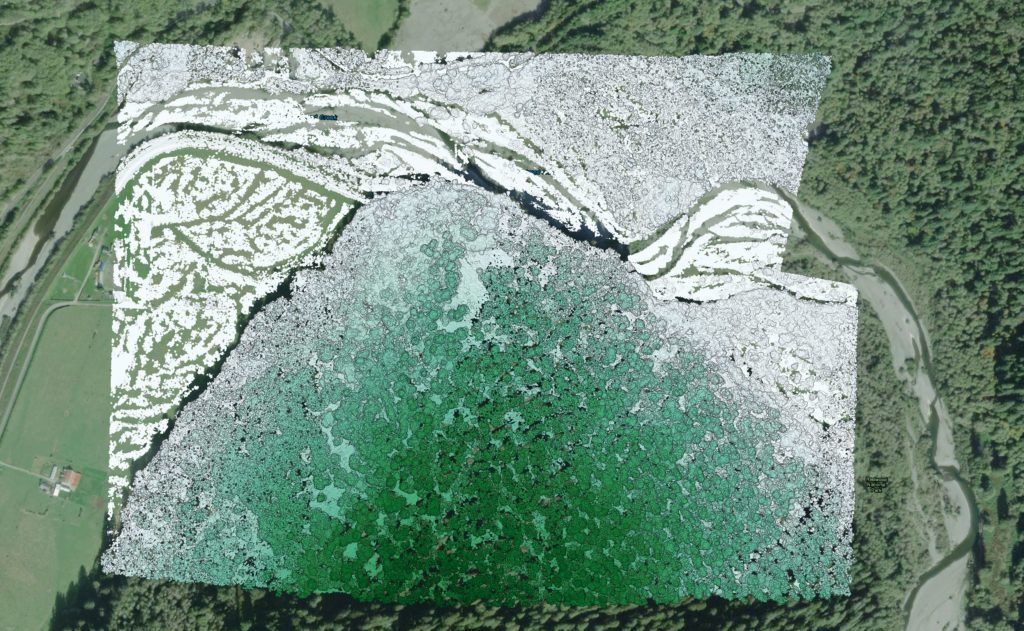
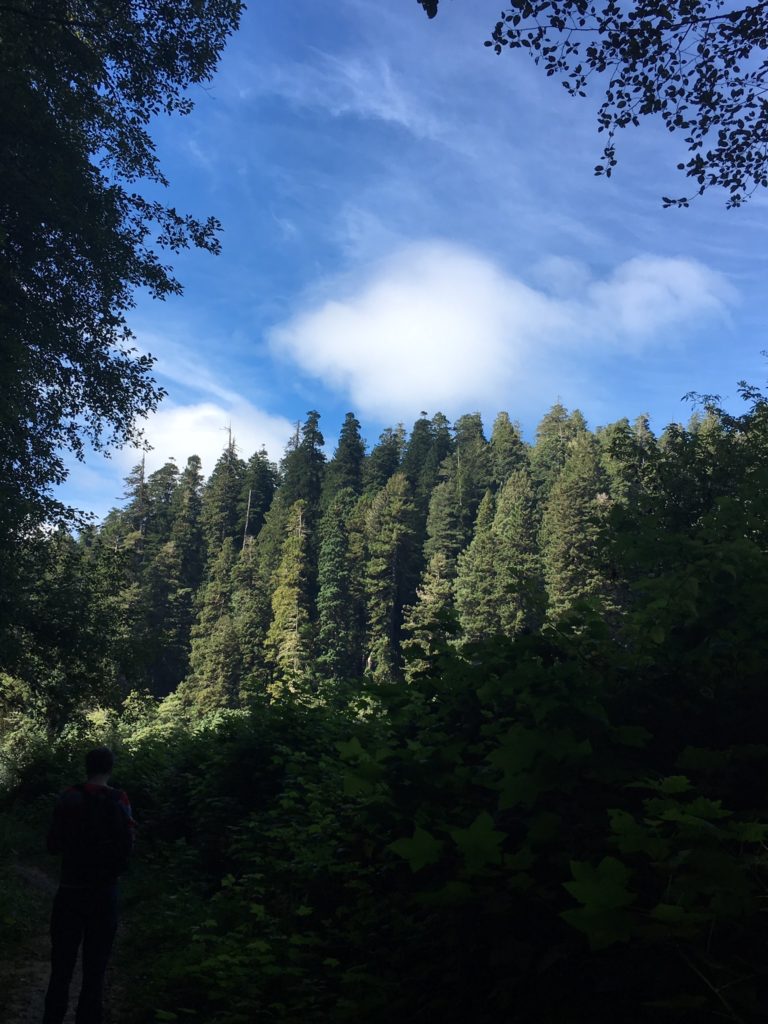
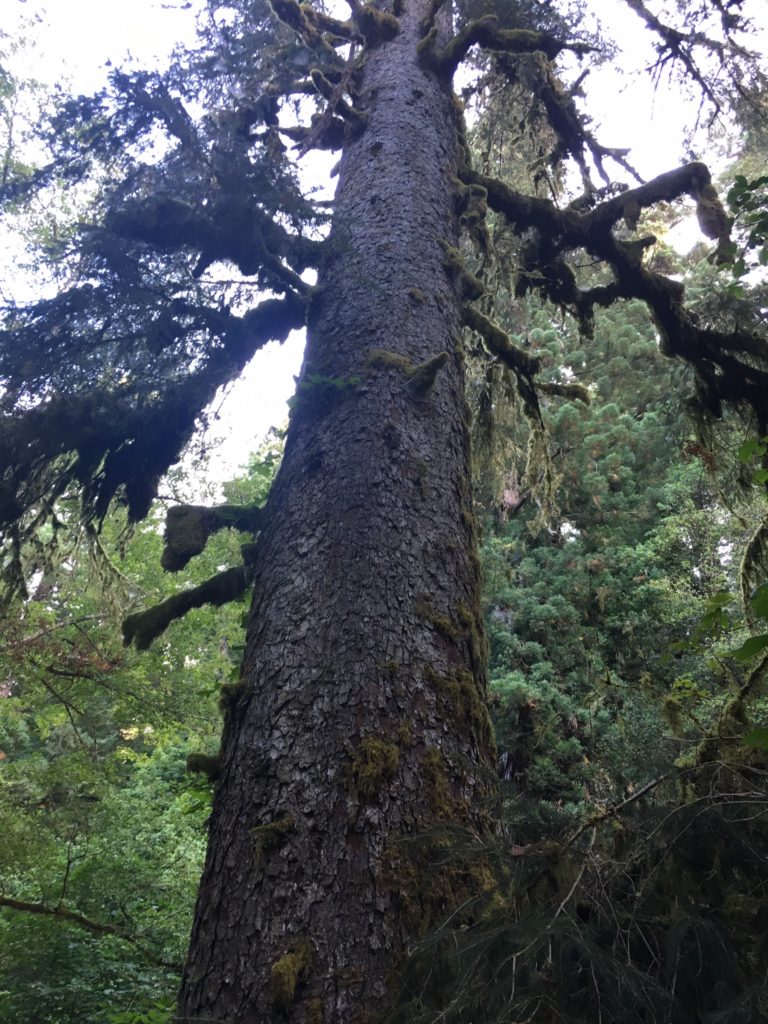
Movement 3 – la foresta che tocca il cielo (The Forest That Touches the Sky)
Starting immediately around the area of the north seasonal foot bridge, the tree height skyrockets. Here is the start of a six mile sweet spot, with nightly fog providing year round moisture for leaves through absorption and for roots through fog drip. But then the fog retreats during the day and allows the sunshine to provide energy for photosynthesis. There are many side streams with gulches and gullies, where the tall trees can find wind protection. The hillsides give a push to the water column of each tree, as water first flows downhill a few feet from the uphill side of the trunk to give a boost to the osmotic pressure that brings that water up through the xylem to the crown. There are also flats near Redwood Creek with very rich soil. The tall redwoods grow all over, on the hills above Redwood Creek, up the side streams, and on the flats. Only the trees on the flats can be accessed safely, Tall Trees Grove year round, then the other flats only when Redwood Creek is running low. It is exceedingly dangerous hiking off trail along the hillsides and creeks above Redwood Creek and its side streams.
In this area there are perhaps 35 trees above 350 feet in height. Before the area timber harvest started in 1950 there were probably four times as many (about 140). How tall was the tallest, was it taller than 380 feet? We’ll never know for sure, and it is very special there are a couple trees around 380 feet in height, still. There is an excellent article on historic tall Douglas firs and Coast redwoods by Micah Ewers, it is here:
In this movement the full orchestra pitches in on the main melody, playing loudly, with the beat kept by a thumping kettle drum. Each beat of the drum represents a 350 foot tree, and each note in the melody signifies the magnificence of the forest. There are also some intervening sections with soft undertones by the woodwinds that signify what was economically gained and then lost as the timber was harvested from 1950 to 1977.
This movement covers about 2:45 to 7:05 in Beethoven’s opus.
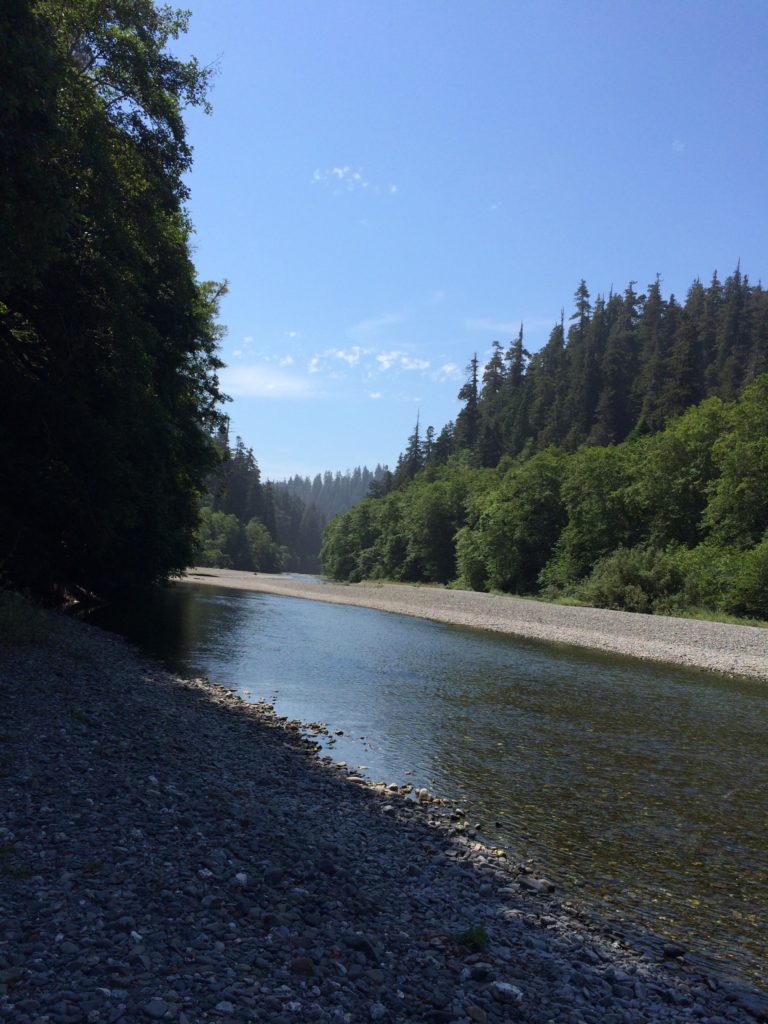
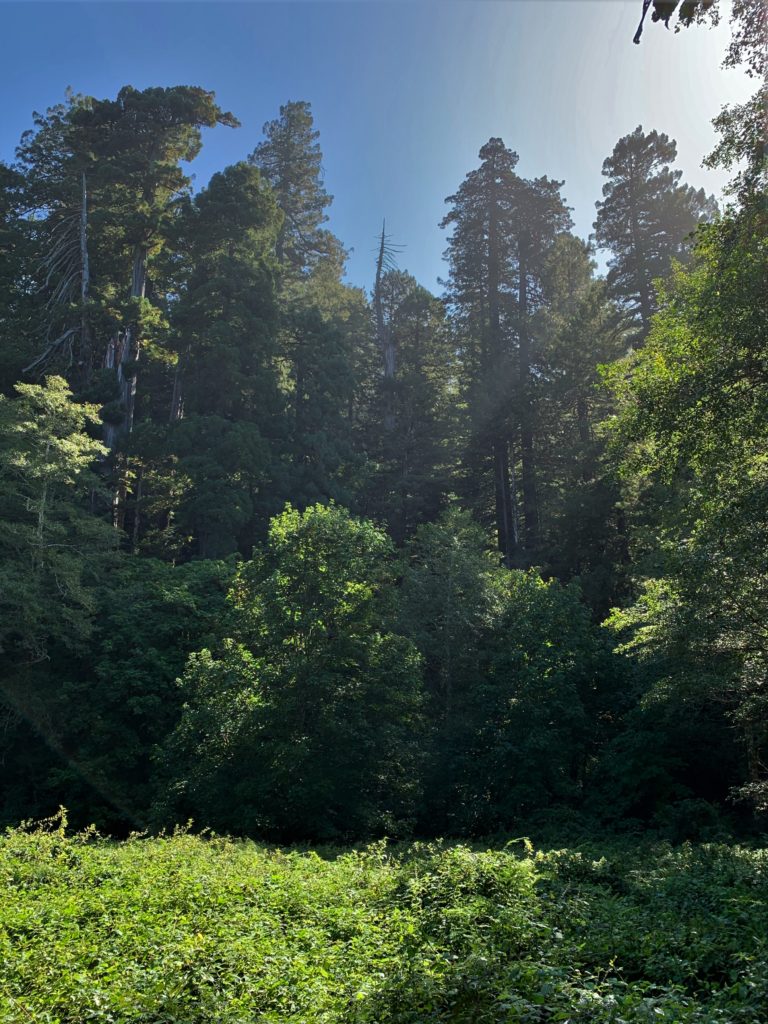
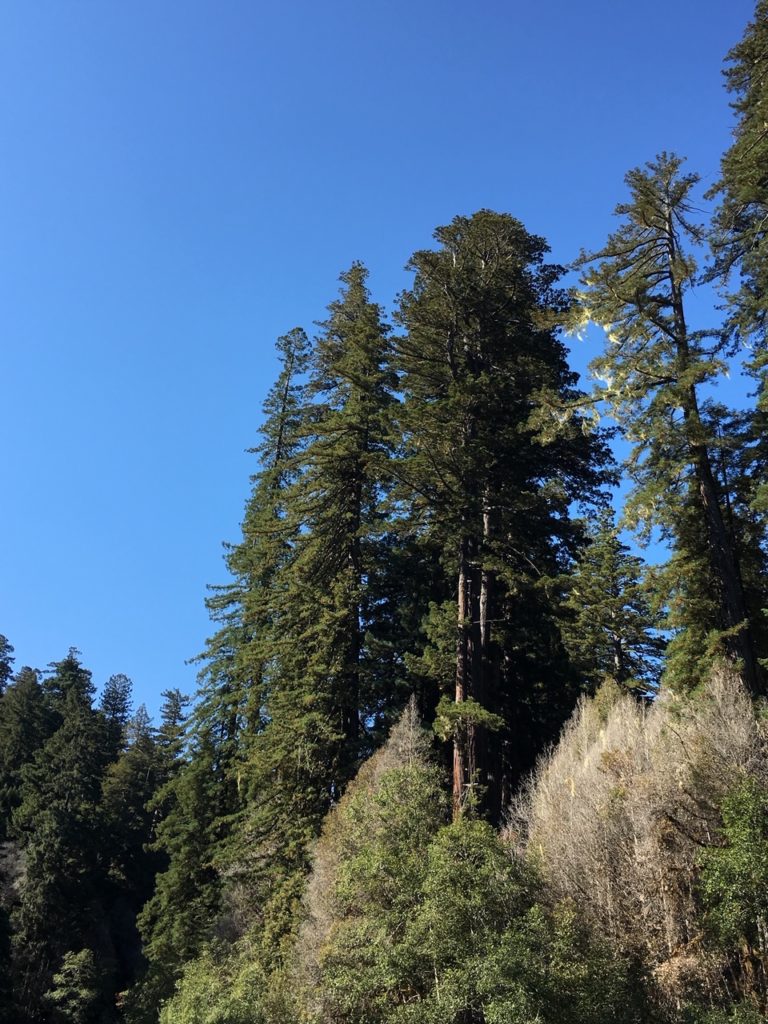


Movement 4 – magnificenza sopra il torrente (Magnificence Above the Stream)
Starting around the Emerald Creek inflow, Redwood Creek becomes more stream like and a lot of the forest above the creek is second growth. But old growth remains, with a few trees here and there trying to touch 350 feet. The nightly fog inflow starts to dissipate in this area, and the forest becomes drier, especially in the summer. This is a hard to reach area with some scenic spots, I have been told.
This movement is carried by woodwinds and the strings are plucked at times, representing resignation that the forest is dwindling and losing height. But every now and then the orchestra chimes in with a new short bright melody, like a scenic early evening sky, representing the occasional towering trees that occur in this area. It is still very good. Then at the very end the main melody returns, for a few short notes. This represents the end of the old growth.
In Beethoven’s opus this runs from about 7:05 through to the end at 9:10.
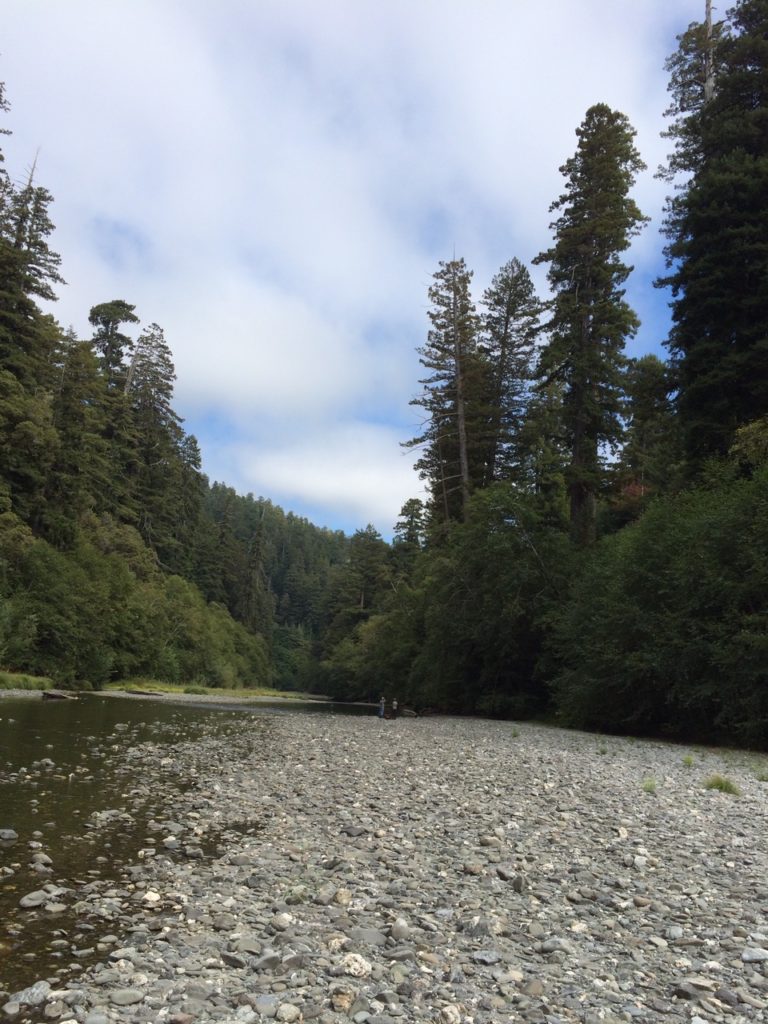
Thanks for reading.
